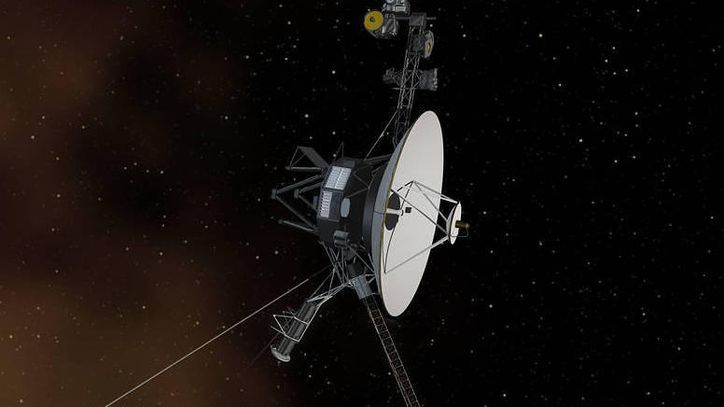Voyager 1 could soon welcome its twin to the space outside our solar system.
- by
-
Amanda Kooser

AIST recently unveiled its HRP-5, the fifth iteration of a humanoid robot design at the International Conference on Intelligent Robots. The long-term vision for the robot is to assist, not replace, workers with certain repetitive tasks. HRP-4 weighed 39kg and stood 151 cm tall with a 0.5kg maximum payload (per hand), so most likely the newest version will at the least boast an increased payload and sensor technology.
Facebook: fb.com/interestingengineering
Twitter: twitter.com/intengineering
Instagram: instagram.com/interestingengineering
Linkedin: linkedin.com/company/10070590

As NASA celebrates its 60th anniversary, see how the historic institution is taking us to the moon, to the surface of Mars, to the outer edge of our solar system and beyond. 🔭
Watch above and beyond: nasa’s journey to tomorrow saturday oct 13 at 9p on discovery and discovery GO.
Nanosatellites are the new low-cost way to get your research into space.


Sometimes, people say that around 80 years of life will be enough for them, but have they thought it through?
When asked how long they want to live, people often say no more than ten years above their country’s average lifespan. This, mind you, is in a world where aging is still inevitable; people know they won’t be in top shape during those ten extra years, and yet, perhaps hoping they might be an exception to that rule, they still wish they could get that little extra time. Even when told that they will live these extra years in complete health, the most common choice is the current maximum recorded human lifespan, which is roughly 120 years.
If we assume that no rejuvenation therapies are available to extend the time you spend in youthful health, then it is somewhat understandable if you don’t feel up for a very long life, because the odds are that its final decades will be increasingly miserable ; however, if rejuvenation therapies were available, and you could be fully healthy for an indefinite time, why stop at 120 years? Life extension advocates have probably all had their fair share of conversations with people who insist that 80-odd years will be more than enough for them, health or no health—worse still, some don’t care about preserving their health precisely because they think that 80 years is a sufficiently long time to live.
How long one wants to live is only his or her business; just like no one should have the right to force other people to live no longer than the current maximum (an imposition that would indirectly result from a hypothetical ban on life extension therapies), no one should have the right to force anyone else to live longer than 80 years, if that’s what he or she wishes for whatever reason. Indeed, it’s not the right to die when you see fit that’s at issue here; the question is whether people who claim that 80 years are enough have seriously thought the matter through before making their minds up or are simply parroting what others typically say out of social pressure.
Rather stupid title (as so often), but interesting article nevertheless…
And it’s quite a filter. Our analysis of advertising images of bacteria from 1848 to the present day finds four broad conventions. Understanding these conventions shows how our relationship with this essential dimension of earth’s biome is subject to the aims and desires of the manufacturers of cleaning products.
1. Cute bacteria
First, bacteria are cute. They are small, vulnerable and toy-like. Their eyes are big and their limbs are tiny. This is strange, considering that advertisements for bacterial products are persuading us to kill these beings by the billion.

“We are all stardust,” astrophysicist Neil deGrasse Tyson tells CBS News Chief White House Correspondent Major Garret on this week’s episode of “The Takeout.” “And you have a connectivity to the universe that for me is uplifting rather than ego-busting.”
Tyson joined the podcast to discuss his new book, “Accessory to War: The Unspoken Alliance Between Astrophysicists and the Military.” The book, written with co-author Avis Lang, explores the long and complicated history of how the study of astrophysics changed warfare.
In July, “The Takeout” welcomed NASA Administrator Jim Bridenstine, who described how reliant we are on space technology.
